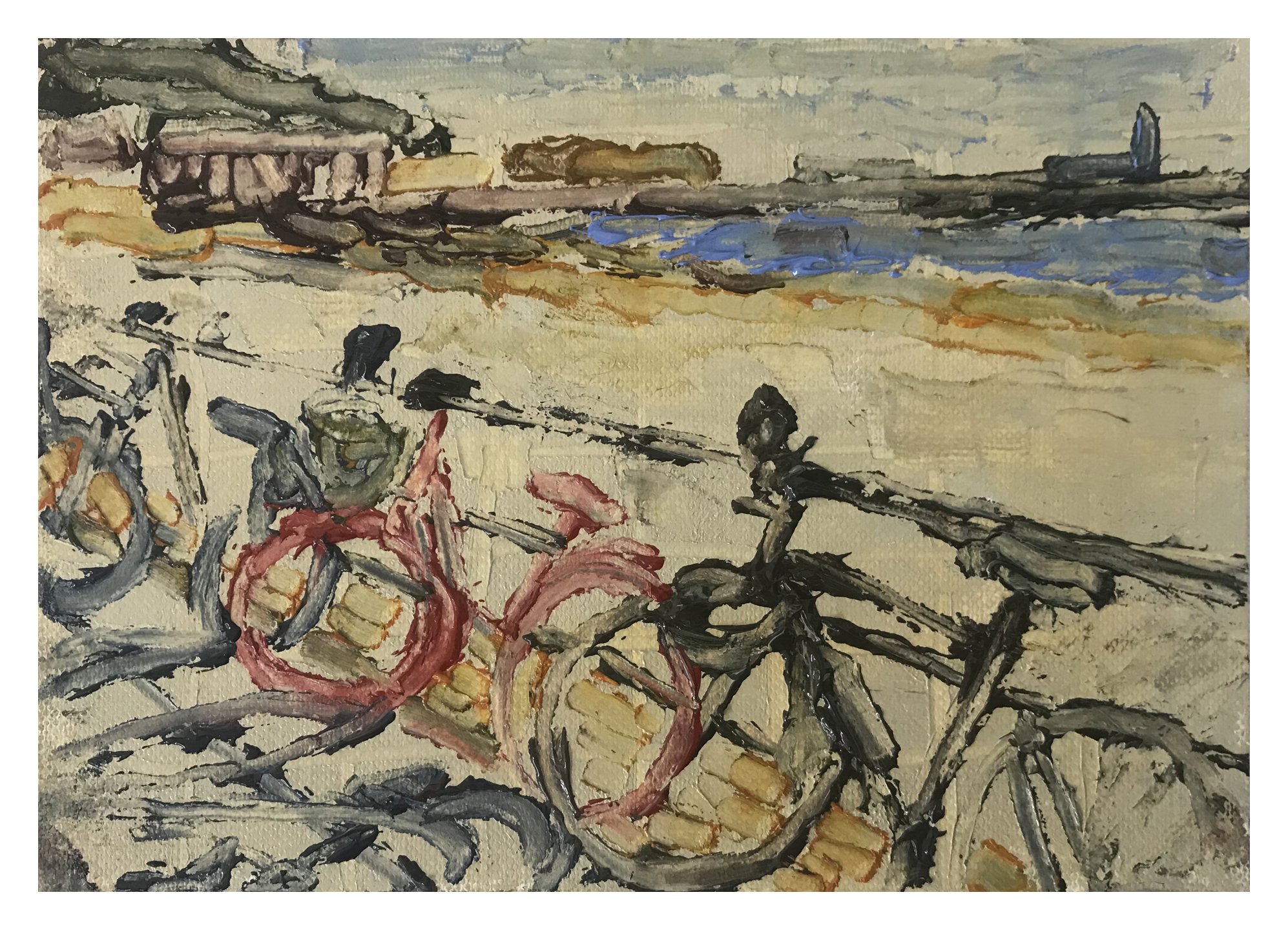I ran across Grant Watson's work on Instagram and then again later when his work was a part of Art at King's Oaks in 2022. His visceral brushstrokes and sense of design remind me of treasure hunting somehow- his works asks for a longer look as feeling and material objects converse symphonically.
Here's a short interview with him:
Laura Vahlberg: How did you get started being an artist?
Grant Watson: I got started pretty early and although as a young kid I wouldn’t have known what an artist was, drawing was always something I loved to do. My dad had been to art school and always encouraged my sisters and I in anything creative. Rather than read us stories, he would make one up on the spot and illustrate them with beautiful drawings. We were frequently taken to art galleries too and with this background it seemed very natural to go on to study drawing and painting at art schools. Along the way, I mostly learned from other students but there were a handful of painting tutors who were important in my development, including Maurice Cockrill, Giuliano Collina and Karel Appel.
LV: What does a typical day in the studio look like for you?
GW: I really enjoy the walk to my studio, it takes about 15 minutes, and I use the time for thinking about what I’m going to do when I get there. I get excited about all the possibilities, I start to dream of new paintings or come up with a strategy to continue one already on the go. On my way I may stop to make quick sketches or take some snaps on my iPhone. I’m full of hope and as I approach the studio, my palette will already have paint on it, just the 3 primary colours and white, and I will be ready to go.
Once I’m inside, thinking time is over and I start working immediately hoping to be guided by sensations rather than thought. I always have several paintings on the go and I may work on them all in spurts for a while before focussing on just one for a longer period of time, which could be for most of the day.
Very often, my most successful stretch of painting happens towards the end of the day, I seem to be quicker and more decisive. It almost feels that the work I’ve done for much of the day has merely been a warm up, a rehearsal. And when I’m in this match fit state of mind, I will take full advantage by pulling out a fresh canvas. It’s a great way to end the day.
LV: How do you know when a painting is complete? Do you have certain goals in mind for a completed picture?
GW: The truth is, I’m never entirely sure when a painting is finished. Sometimes I’m convinced a painting is complete only to look at it the next day in horror. So I think it’s a matter of time for me, if I live with them for a while and if I don’t find myself wanting to throw them away or make changes, I’ll call them finished.
There are no hard and fast goals but generally I’d like a completed picture to surprise me in some way, for it to possess some sort of transformative magic. Of course a painting can work to some extent if you are able to use colour, form and composition successfully but it needs something else too, and I think a finished painting will have found this something else, specific to each picture. ‘The something else’ is impossible to translate into words but perhaps it has to do with the painting needing some kind of emotional intensity before it can be called finished.
Grant Watson's work can be viewed in person at Three Works Gallery (Scarborough, north Yorkshire), Aleph Comtemporary (London), and at this upcoming group show in March:
"Dog Show," Thames-Side Studios Gallery, London, curated by Enzo Marra (Opening 18 March 2023).
